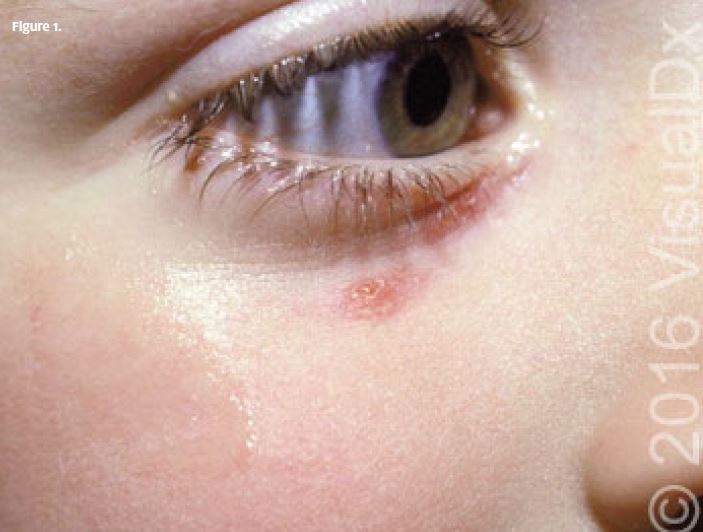Published on
Differential Diagnosis
- Toxoplasmosis
- Tularemia
- Abscess
- Cat-scratch disease
Diagnosis
The patient has cat-scratch disease.
Discussion
Cat-scratch disease is a benign and self-limited bacterial infection with Bartonella henselae. It is characterized in most cases by a primary papulopustular skin lesion and enlarged localized lymph nodes, with a history of cat contact proximal to the involved node. Fatigue, malaise, pharyngitis, conjunctivitis, headache, and low-grade fever may be present. After inoculation, the incubation period is generally a few days to several weeks.
Dermatologic involvement is seen in approximately two-thirds of patients and includes evidence of a scratch with or without a papulopustular lesion, a widespread morbilliform eruption, erythema nodosum (warm, erythematous, and painful nodules in the lower extremities), erythema multiforme, and/or thrombocytopenic purpura. Splenomegaly, weight loss, and parotid swelling rarely appear.
The eye is involved in less than 10% of cases. Usually only one eye is involved, with either granulomatous conjunctivitis (pinkeye), eyelid lesions (bacillary angiomatosis), or neuroretinitis. Parinaud oculoglandular syndrome is the most common ocular manifestation, with preauricular lymph node swelling on the side of the affected eye and granulomatous conjunctivitis.
In two-thirds of patients, the lesion lasts for less than 1 month, although it may persist for 2 months or more in some cases. Nodes are tender, gradually increase in size, become erythematous and fluctuant, and may become suppurative. Most patients recover without sequelae. Encephalitis may occur in 1% to 7% of cases, typically appearing 2 to 6 weeks after classic cat-scratch disease. Patients may present with associated seizures or status epilepticus.
Acknowledgment: Image courtesy of Logical Images, Inc. (www.VisualDx.com/JUCM).

